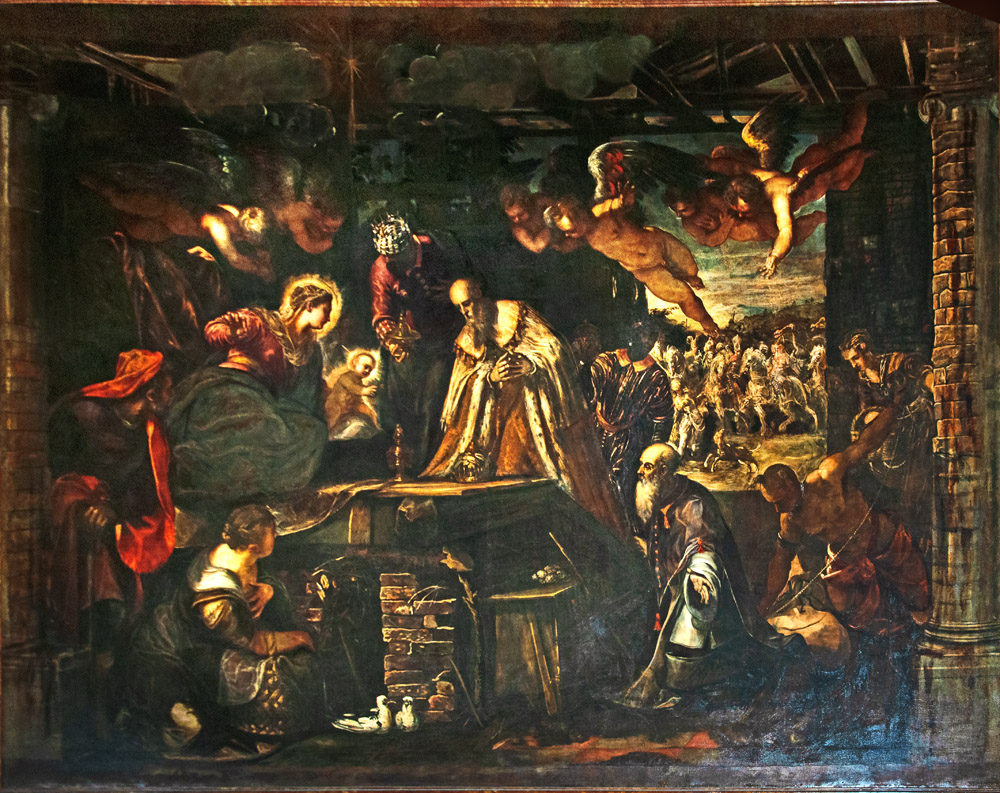Jacopo Tintoretto, The Adoration of the Magi

1582
Oil on canvas
Scuola Grande di San Rocco, Venice, Italy
As often in this period, the Magi are pictured as kings and are diverse as to age and ethnicity. The oldest one has placed his crown on the table along with his gift, a sign of his submission. The kings' considerable retinue waits in the sunlit background.
In the lower register the artist extends the diversity of the visitors by introducing characters not usually seen in Magi images. On the left, a young woman has brought a basket and a platter with two doves (an allusion to Presentation images). A second woman enters from the far right with another basket. Next to her, a man offering a string of beads appears to be an indigenous American. In many sixteenth-century European images men of this newly discovered race were pictured nearly naked and with partly shaved skulls, like this man. Strings of beads were an important factor in the cultures of eastern North America at the time. Either Tintoretto had encountered enough ethnography to know this, or he was making a very lucky guess.
There are also two European males: a poor pilgrim with a staff on the far left and a rich old man in the center. The old man's beard and spread-arms gesture duplicate those of the Doge in
this Tintoretto
in the Ducal Palace and in
this mosaic
at St. Mark's Basilica. Though clearly not a Doge (no ducal crown, no ermine), he may represent the people of Venice. His offering is on the low table before him, but I can't make out what it is.
View this image in full resolution.
Read more about images of The Magi.
Photographed at the site by Richard Stracke, shared under Attribution-NonCommercial-ShareAlike license.